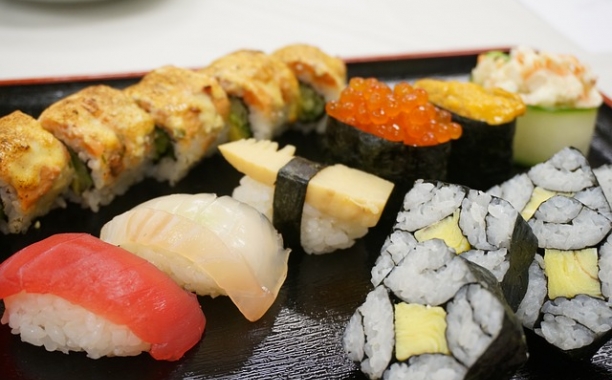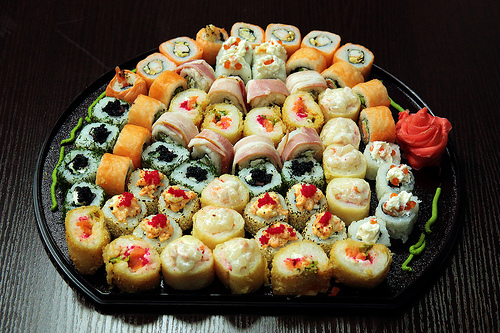What To Look For In Quality Sushi

With so many sushi bars popping up all over the place and our palates sometimes used to the pre-packaged sushi we buy from the supermarket, it’s good to take a quick reminder course on what quality sushi is. Whether you’re a first-timer or a long-time sushi expert, it’s helpful to keep the following criteria in mind when looking for quality sushi:
Before Sitting Down:
- Look for red bloodlines in the yellowtail and snapper, making sure they aren’t brown or cut away
- The tuna should be top-notch as that’s the most expensive fish in the place
- Make sure the albacore, escolar, shrimp and salmon are NOT on display as they should be kept in a freezer
- Ask to make sure that the Tamago, Anago and shrimp rolls are all made in house, not pre-packaged
- Engage the sushi chef, making sure they are knowledgeable and can steer you in the right direction for the catch of the day and what’s good there
- Look for an open kitchen so you can see what the chefs are doing. Make sure the workspaces are clean and in order
Inspecting The Sushi: When the sushi arrives, make sure of the following:
- The rice should be Calrose and properly cooked and seasoned. It should be sticky and firm as well as a little sweet. Bad rice equals bad sushi.
- Start with namesake, Hamachi and tuna. If they taste good, move onto the Uni and Saba, then try Unagi and tuna rolls.
- Mackerel should be smooth and buttery
- Saba should not be rubbery or smell
- Almost everything you eat should be odorless, missing the fishy smell, or at the very least have a fresh sea smell. No sour tastes should linger in the mouth (an exception could be Saba which is marinated with vinegar)
- The colors should be vibrant and pop out; salmon should be orange, not purplish-brown; Maguro should be blood red; Toro should be marbled pink.
- Shisho leaf should be fresh and minty, not bitter
- Salmon should be sweet
- Tamago should be sweet and salty
- Unagi should always be served hot
- Ikura should be slightly salty, but not brined
- Tako and Ika should be crisp when you first bite into it, but then slightly chewy
- Wasabi should be freshly grated from the root, not the green horseradish. It should have zing, but not make you cry
- Stay away from florescent pink Gari
- The cut should be smooth, with one motion with no jagged edges; it should not be more than one or two finger lengths
Discover the different variety of Sushi in our Sushi section.







